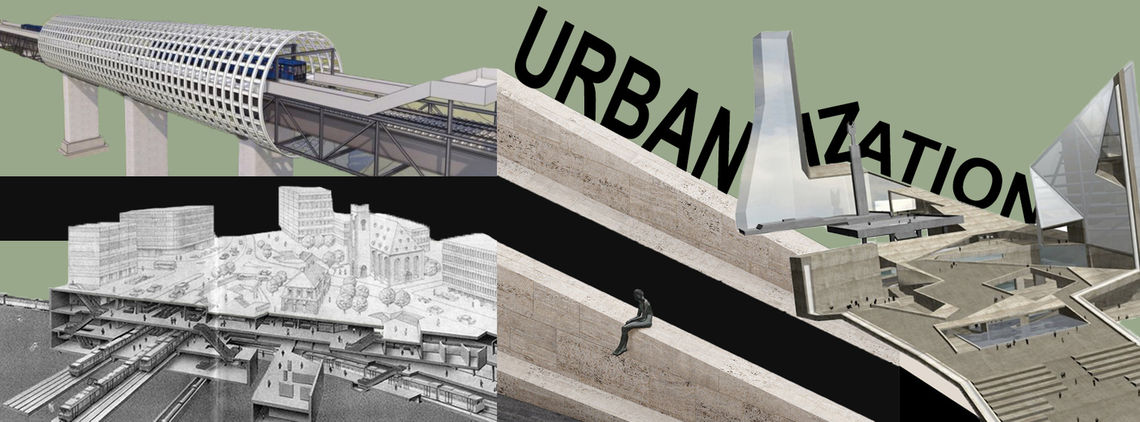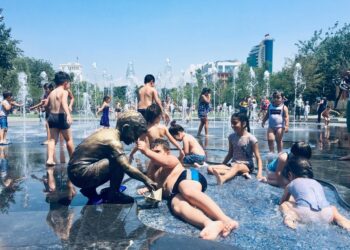
It is time Armenia rethinks its relationship to territory. A land-locked country with limited natural resources and no direct access to the sea, Armenia’s biggest national asset is its land. And yet, it is alarming how irresponsibly it is being handled. Similar to the way things worked before the Velvet Revolution, development projects are popping up haphazardly across the country regularly: renderings of a new metro station, an extension to the historic Cascade, a high-tech campus just outside the city center, residential complexes for expats and seasonal dwellers. The list of projects is endlessly circulating on media platforms, all in the name of economic growth and prosperity.
The risk of chaos and urban failures is high if this trajectory continues. Without a holistic vision for growth in the country, without a regional spatial planning framework that brings together the national assets of land and water with the different sectors of infrastructure, transportation, urban development, tourism, agriculture and energy, the consequences of decisions taken today will be irreversible for generations to come. Planning has always been political, and political figures have always pushed along their own pet projects. The problem here is greater and lies in the lack of a national vision for the country. Projects tend to be pursued for short-term economic goal under the pretext of development and capitalizing on nostalgic sentiments of building in the homeland.
Despite the tremendous efforts of activists and scholars in pushing back on controversial projects and holding the government accountable—the latest of which is the case of the Amulsar mining project—the issue is fundamentally deeper: it cannot and should not remain at the level of activism. It needs structural change. While members of civil society have been voicing concerns over the sector of urban development at large, the government has, to date, failed to take the necessary measures to address the decades-long dysfunctional system in place. The recent resignation of Sarhat Petrosyan as head of the Real Estate Cadastre Committee is an alarming sign of the inability of professionals to operate from within and call for change.
There is urgency to establish a shift in the culture and mindset regarding urban design and planning in the country. A more comprehensive approach to planning and policymaking should align the different existing spatial and sectoral policies. It is imperative that sectoral policies translate into explicit spatial dimensions and account for their interrelationship with other sectors to ensure a more coherent and holistic approach to urban planning and development. Lack of cross-sectoral cooperation leads to ineffective projects. How do we address the largely disproportionate growth between Yerevan and regional centers such as Gyumri, Vanadzor, Dilijan and Jermuk? Where are the most crucial infrastructural interventions needed to lift those cities from stagnation and attract human and cultural capital? How do we protect our natural ecosystems and still benefit from their assets? How do we control urban sprawl and the emergence of residential complexes that are unsustainable models of living and offer poor urban life? What kind of public transport scheme would be best-suited for each city and the country at large to reduce vehicular traffic and strengthen the connection among the different regions? Does the government have a solid platform for the collection and management of spatial data that would be crucial before embarking on any given project? These questions pertaining to the field of urban planning and development highlight the interdependence of different sectors and the need to mobilize different ministries for successful comprehensive planning.
In an effort to incite positive change and devise successful long-term plans for urban and regional development, the government should immediately launch a strategy for a national physical planning framework. This could begin by reforming the National Urban Planning Committee[1] that would be tasked to lead the effort. In order to secure inter-ministerial and inter-departmental cooperation, it is important that this entity operates within government structures but not be subordinate to any given ministry. The reformed Committee would include urban planners and architects, material and social scientists, representatives from key ministries, among others, with a mission to develop a national physical plan. In terms of the process for creating the planning framework, there is really no need to invent a new method here, since one already exists and has been in use for almost a century across the world. The basic process is generally divided into four distinct phases:[2]
(1) survey and analysis, which heavily relies on data mapping and cartographic representation
(2) goal formulation or vision, which includes producing regional master plans
(3) plan-making or cluster of projects
(4) implementation
Though divided into tasks, the process is certainly not a linear one. For instance, once a goal has been formulated, there is often a need to revisit a survey to gather more data in a given field.
Finally, we need to restore the role of design, the design of cities and territories, in the social construction of hope. Architecture, urbanism, civil and environmental engineering, urban ecology, landscape architecture and all the disciplines of spatial transformation define, shape and diffuse visions and systems of values. The current state of these disciplines (or the lack thereof) within higher education in Armenia is unfortunately extremely poor, and it is imperative to devise reforms within the educational institutions as well.
In 2020, Armenia can no longer afford statements such as: “With the request of the city architect Arthur Meschian, Tarberak architectural studio has generated a concept for the extension of Cascade. The aim is to have a project that can attract potential investors.” Instead, we should read “As part of the implementation of the Yerevan 2050 master plan, the city of Yerevan has launched an open competition for the extension of the historic Cascade.” Nation-building should be a democratic, inclusive and sustainable endeavor. We need to democratize the process of decision-making and engage multiple stakeholders, encourage dialogue and criticism, and organize open competitions and town halls. Most importantly, we need a vision that goes beyond neoliberal policies that only favor the select few.
—————————
1- The Committee is officially called “Hayasdani Hanrapetutyan Kaghakashinutyan Gomide” which translates to “The City-Building Committee of the Republic of Armenia”. The term kaghakashinoutyoun [city-building] reduces the discipline to the act of construction, rather than planning at large. Perhaps, finding the right term in Armenian for Urban Planning would be a step towards rectifying the definition and mission of the discipline in the country.
2 – See: Frederick J. Adams, Urban Planning Education in the United States (Cincinnati, Ohio: Alfred Bettman Foundation, 1954).
also read
Zones of Entrapment: Yerevan’s 2800th Anniversary Park and the Tyranny of Taste-Fullness
In the context of autocratic, oligarchic or committedly neo-liberal regimes which continually propagate a coercive and incarcerating model of urban planning, the multiplication of such spaces as the 2800th Anniversary Park of Yerevan is organic, writes Vigen Galstyan.
Read moreChronicles of the Old Yerevan Quarter
The destruction of some historic buildings began in the Soviet era. That practice continued after the independence of Armenia. The Old Yerevan Project is meant to restore the architectural heritage of the capital city, however, progress has been slow and controversial.
Read moreThe Cost of Eminent Domain
A recent ruling by the ECHR has brought up the issue of the proper application of eminent domain once again. While the state has the right to exercise eminent domain, it also has a responsibility to guarantee that the purpose is to benefit society, not narrow business interests.
Read more



